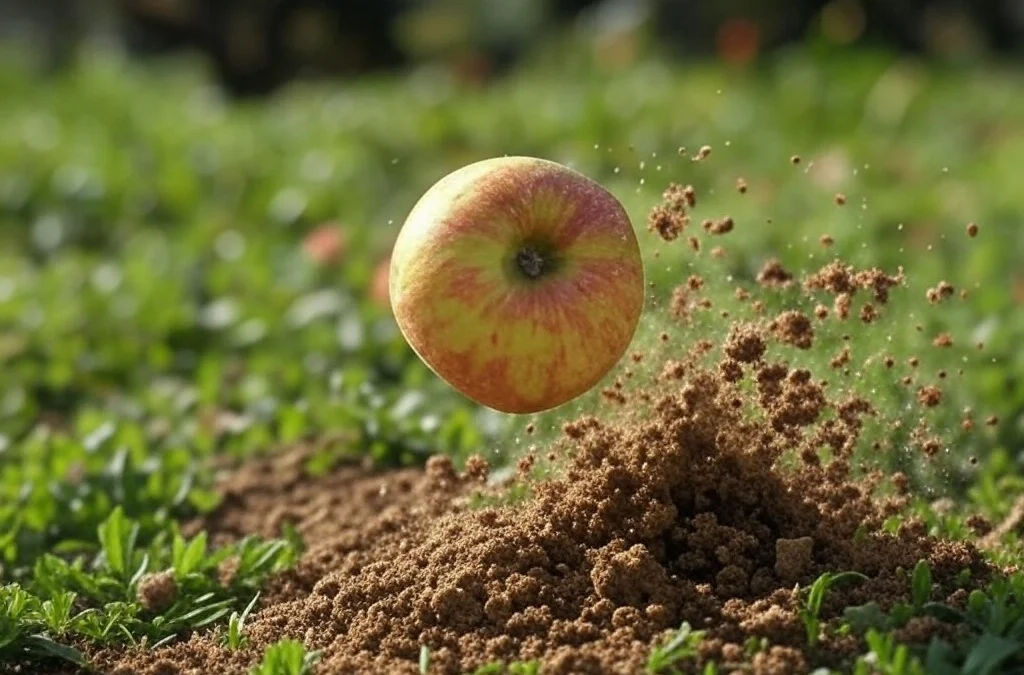Momentum is a concept we encounter every day, often without even realizing it. Whether it’s a car speeding down a highway, a soccer ball being kicked across a field, or a skateboarder zipping down a ramp, momentum is at play. It’s all about movement and how mass and velocity come together to dictate how objects behave when they collide or when they are in motion. Understanding momentum can not only help in grasping certain physics principles but also in appreciating how things work in our everyday lives.
In this article, we’ll explore 20 real-life examples of momentum that illustrate its importance and impact. From sports and transportation to natural phenomena and technology, momentum is a key factor that influences a wide range of activities and processes. By examining these examples, you’ll gain a clearer picture of how momentum affects everything around us and why it is a fundamental concept in both science and our daily experiences. So, let’s dive in and discover how momentum makes the world go round!
Momentum Explained
Momentum is the measure of motion in an object, calculated by multiplying its mass by its velocity. In simple terms, momentum tells us how hard it is to stop an object in motion. For example, a fast-moving car has more momentum than a slow-moving one of the same size, meaning it requires more force to bring it to a stop.
In everyday life, momentum plays a role in many situations. Think of a soccer ball rolling across a field. The ball’s mass and speed combine to give it momentum, which keeps it moving forward until friction or another force, like a player’s foot, stops it. The larger or faster the object, the more momentum it has. This is why heavy trucks take longer to stop than small cars traveling at the same speed.
Momentum helps explain why we need seatbelts in cars, why athletes build up speed before a jump, and even how rivers flow with enough power to carry rocks downstream. It shows how motion, speed, and mass work together in everyday activities, helping us predict and make sense of movement all around us.
Best Examples of Momentum
Momentum is a concept from physics that explains how objects in motion carry energy. It’s not just confined to textbooks; it shows up in our daily lives in various fascinating ways. Here’s a look at ten examples of momentum that you might encounter in everyday situations.
1. Sports and Athletics
In sports, momentum is a game-changer. Consider a football player running down the field. The player’s mass, combined with their speed, creates momentum, making it hard for defenders to stop them. The concept also explains how a fast-moving soccer ball can be much harder to catch than a slow one.
2. Car Accidents
When two cars collide, momentum plays a crucial role in the impact’s severity. A heavier vehicle moving at high speed carries more momentum and can cause more damage upon impact. This is why understanding momentum is vital for car safety designs, like crumple zones, which help absorb some of the energy.
3. Rocket Launches
Rockets gain momentum as they burn fuel and accelerate upward. At liftoff, the enormous force generated by the engines propels the rocket, overcoming Earth’s gravity. This momentum is crucial for the rocket to reach space, illustrating the powerful combination of mass and velocity.
4. Cycling Downhill
When a cyclist heads downhill, they gain momentum quickly. Gravity pulls them downward, increasing their speed. This momentum helps them coast with less effort, but it also means they need to be cautious when braking to avoid losing control.
5. Swinging a Bat
In baseball, the momentum of a swinging bat can send the ball flying. The batter transfers energy from their body to the bat, and then to the ball. A fast, well-timed swing means more momentum, allowing the ball to travel farther.
6. River Currents
A river’s current carries water downstream with considerable momentum. This flow can move debris and even erode riverbanks over time. The momentum of water is harnessed in hydroelectric dams, where it turns turbines to generate electricity.
7. Trains on Tracks
Trains, due to their large mass, have significant momentum. This makes them hard to stop quickly. Engineers must calculate stopping distances carefully, using brakes to gradually reduce momentum and ensure safe stops.
8. Playing Pool
When you strike a pool ball with the cue, you’re using momentum to send it across the table. The ball’s mass and your striking force determine its speed and direction. Precision in managing momentum can mean the difference between winning and losing a game.
9. Ice Skating
An ice skater builds momentum by pushing against the ice. Once moving, the low friction allows them to glide effortlessly. Skilled skaters can use their momentum to perform spins and jumps, making the sport both graceful and dynamic.
10. Pendulum Clocks
In a pendulum clock, the swinging pendulum maintains momentum with each swing. This consistent movement helps regulate the clock’s timekeeping. The momentum ensures the pendulum swings back and forth at a steady rate, crucial for the clock’s accuracy.
11. Bowling Ball Striking Pins
When a heavy bowling ball rolls down the lane and hits the pins, it transfers its momentum to them. The momentum of the ball is determined by its mass and velocity. As it collides with the pins, this momentum causes them to scatter, often resulting in a strike. The heavier the ball and the faster it’s thrown, the greater the momentum it carries.
12. Catching a Football
During a football game, when a player catches a pass, they must absorb the momentum of the ball. A well-thrown football has speed and direction, constituting its momentum. The receiving player uses their hands and body to gradually decelerate the ball, ensuring a successful catch. This interaction showcases how momentum can be managed and controlled.
13. Train Stopping at a Station
Trains, due to their massive size and speed, possess significant momentum. As a train approaches a station, the engineer applies the brakes well in advance to gradually reduce its momentum. This is crucial because stopping such a large mass quickly would require immense force. The process exemplifies the practical need to manage momentum in transportation.
14. Skateboarding Tricks
When a skateboarder performs tricks, they utilize momentum to execute jumps and flips. As they speed down a ramp, their velocity increases, enhancing their momentum. This momentum is then used to propel them into the air, allowing for various aerial maneuvers. Successful tricks rely on the precise manipulation of momentum.
15. Meteor Striking Earth
A meteor traveling through space at high velocity possesses enormous momentum. When it enters Earth’s atmosphere, its momentum can cause a significant impact on the surface. The force of this impact depends on the speed and mass of the meteor. This example highlights how cosmic bodies carry momentum across vast distances.
16. Rowing a Boat
In rowing, athletes apply force to the oars, pushing against the water to generate momentum. This momentum propels the boat forward. The synchronized effort of the rowers ensures that the boat maintains a steady speed. Efficient rowing involves maximizing momentum with each stroke, demonstrating teamwork and precision.
17. Car Crash Dynamics
In a car crash, the momentum of the vehicles involved plays a crucial role in the severity of the impact. The speed and mass of the cars determine the momentum they carry. During a collision, this momentum is transferred between the vehicles, affecting the damage and potential injuries. Engineers study these dynamics to improve safety features.
18. Pendulum Swing
A pendulum in motion is a classic example of momentum at work. As it swings from side to side, its momentum changes direction but remains constant in magnitude (ignoring air resistance). At its highest points, the pendulum’s speed is momentarily zero, but its momentum is conserved as it swings back down. This demonstrates the interplay between kinetic and potential energy.
19. Hammering a Nail
When a hammer strikes a nail, the momentum from the hammer is transferred to the nail, driving it into a surface. The effectiveness of this action depends on the mass and speed of the hammer. A heavier hammer swung with greater force delivers more momentum, making it easier to drive the nail. This common task illustrates momentum transfer in everyday tools.
20. Sprinting in Athletics
Sprinters rely on momentum to achieve maximum speed on the track. As they push off the starting blocks, athletes build up momentum through rapid acceleration. Maintaining this momentum is key to winning races. The combination of muscle power and technique allows sprinters to harness and sustain their momentum throughout the race.
How Momentum Impacts Our Daily Lives
Momentum goes beyond a scientific concept; it is a force we experience in almost every part of life. From a child on a swing to a cyclist speeding downhill, momentum is always at work, driving movement and interaction around us.
Imagine being in a car when the driver suddenly brakes. You feel your body lean forward, resisting the stop. This is momentum. Your body wants to keep moving even though the car is slowing down. Seatbelts help manage this force, holding you safely in place. This simple example shows why momentum is a key factor in car safety design.
Momentum also plays a role in sports. Think of a soccer ball kicked across a field. The force of the kick and the ball’s weight give it momentum, sending it flying toward the goal. In baseball, a bat’s momentum can send the ball soaring. Whether it’s a swing, a pass, or a sprint, momentum in sports reveals how speed and mass combine to drive powerful, controlled movements.
Cycling highlights another side of momentum. As you pedal uphill, momentum fades, and effort increases. But going downhill, momentum builds quickly with the help of gravity, letting you coast with ease. Brakes become essential, helping you manage the extra force so you can slow down smoothly and safely.
Nature provides its own examples, too. A river’s current is a powerful show of momentum in action. Flowing water gains momentum, allowing it to carry pebbles, branches, or even boats downstream. The faster and heavier the flow, the more momentum it has, giving rivers the strength to shape landscapes over time.
In all of these cases, momentum is a force that moves objects, shapes interactions, and even influences how we build and protect. On a practical level, momentum helps us design safer vehicles, improve athletic performance, and understand natural forces. But on a deeper level, momentum represents a certain rhythm of life – a reminder that movement has purpose and direction. Whether it’s an athlete in motion or a river carving its path, momentum is about harnessing energy and finding balance. It’s a powerful reminder that in both nature and life, the direction and force of our actions can shape what lies ahead.
Understanding Momentum in Traffic Accidents
Momentum plays a crucial role in traffic accidents, influencing both the severity of collisions and the aftermath. In simple terms, momentum is the product of an object’s mass and velocity, and in the context of vehicles, it provides insights into how much force is involved during a crash. When two vehicles collide, the total momentum before the impact equals the total momentum after, assuming no external forces are at play. This principle, known as the conservation of momentum, helps accident reconstruction experts determine the speeds and directions of vehicles involved in an accident.
For instance, if a heavy truck collides with a smaller car, the truck’s greater mass means it has more momentum, even if both are traveling at the same speed. This usually results in the car experiencing a more significant impact, often leading to more severe damages or injuries. Understanding momentum in such scenarios can guide the design of safer vehicles and inform traffic laws aimed at minimizing high-impact collisions. Additionally, it underscores the importance of wearing seatbelts and having airbags, as these safety features are designed to reduce the force experienced by passengers by extending the time over which the momentum change occurs.
Momentum in Sports Performance
Momentum is a key concept in sports, impacting both individual athletes and team dynamics. In sports, momentum refers not only to the physical movement of players but also to the psychological shift that can occur during a game. Physically, an athlete’s momentum is influenced by their speed and mass, which can affect their ability to change direction quickly or withstand tackles in contact sports like football or rugby. Coaches and trainers work on optimizing athletes’ momentum by improving their speed and strength, enabling them to perform at higher levels and gain a competitive edge.
Psychologically, momentum can shift during a game, often described as “the team with momentum.” This refers to a period when a team appears to be performing exceptionally well, scoring points, and dominating play. Such shifts can result from a series of successful plays, a change in strategy, or even a single pivotal moment that boosts confidence and energy levels. Understanding how to harness and maintain momentum can significantly affect the outcome of a match. Teams often focus on maintaining high levels of focus and motivation to capitalize on these momentum swings, which can be just as critical as physical conditioning.
Momentum in Sports: A Game-Changer
Momentum is a big deal in sports. It’s not just physics; it’s a mental boost. When a team starts winning, they often keep winning. This is due to both physical and psychological momentum. Athletes talk about “being in the zone,” where everything clicks. Success breeds confidence, and confidence can turn the tide in a game. Picture a basketball team making several shots in a row. The players feel unstoppable. The crowd goes wild, adding energy on the court. This synergy can overwhelm opponents.
Coaches often focus on breaking the other team’s momentum. They might call a timeout to disrupt the flow. It’s a strategy to reset their own team’s focus. In sports like soccer, a single goal can change the game’s momentum. It’s fascinating how a shift in momentum can lead to comebacks or unexpected victories. Fans love these moments. They make sports unpredictable and thrilling. This connection between momentum and sports performance is a hot topic in sports psychology. It’s about understanding how mental states influence physical actions. The power of momentum in sports is a testament to the mix of mind and body. It shows how a psychological edge can be just as crucial as physical skill.
Momentum in Financial Markets
Momentum isn’t just for objects in motion. It plays a key role in financial markets too. Traders and investors watch momentum indicators to predict market trends. In the stock market, momentum can drive prices up or down. When stocks start rising, more investors jump in, pushing prices higher. This is called a bullish market. Conversely, when prices fall, it can trigger a bearish market. Momentum traders aim to profit by riding these waves.
However, this strategy is not without risk. Markets can be fickle. A sudden change in momentum can lead to significant losses. It’s crucial for traders to stay informed and flexible. They need to adapt to shifting market conditions. The concept of momentum is also tied to economic cycles. During a boom, economic momentum can lead to increased spending and investment. In a recession, the opposite occurs. Understanding momentum in financial markets requires a blend of analysis and intuition. It’s about reading the signs and making informed decisions. This can be daunting for individual investors. Yet, mastering this aspect of finance can lead to successful investment strategies. Momentum highlights the dynamic nature of markets. It reminds us that, like life, markets are always in flux.
Read also: 20 Key Concepts in International Relations
The Most Popular on BitGlint

40 Social Dilemma Examples in the World & Real Life
Social dilemmas are everywhere. They shape the choices we make at work, in our communities, and even on a global...

30 Favor Examples & Definition
Doing a favor means helping someone without expecting anything in return. It’s an act of kindness that can strengthen...

30 Naivety Examples & Definition
Naivety is something most people experience at some point in their lives. It often starts in childhood, but for some,...

20 Chronology Examples & Meaning
Chronology is something we use more than we realize. It shows up in conversations, in how we remember the past, and in...

30 Wishful Thinking Examples & Meaning
Wishful thinking is something we all do at some point. You hope things will turn out fine—even if there’s no real...

20 Examples of Gravity & What Gravity Really Is
Gravity is one of the most important forces in the universe, but many people don’t fully understand what it really is...

20 Examples of Secondary Consumers in the Food Chain
Secondary consumers are animals that eat other animals—usually herbivores that feed on plants. They’re an important...
Get Inspired with BitGlint
The Latest
30 Flow State Examples & Definition
Most people have felt it at some point — that rare moment when everything just clicks. You're working, moving, or thinking, and suddenly it's like the rest of the world fades out. You're focused, clear, and everything you're doing feels smooth and natural. That’s...

30 Cynicism Examples in Everyday Life & Definition
Cynicism is something most people have seen, heard, or even felt - but few stop to really think about what it means. It shows up in jokes, in conversations, and in quiet thoughts we don’t always say out loud. Some people wear it like armor. Others see it as honesty....
50 Examples of Square Things
Square things are part of everyday life, even if we don’t always think about them. From objects we use at home to tools, packaging, and design elements we see out in the world, the square shape is everywhere. It’s simple, balanced, and practical — which is exactly why...
20 Hinduism Examples: Symbols, Gods & Core Beliefs
Hinduism is practiced by over a billion of people every day - but for those unfamiliar with it, it can seem complex or even confusing. With its many gods, rituals, and traditions, it raises a lot of questions. What do Hindus actually believe? What are the main...

